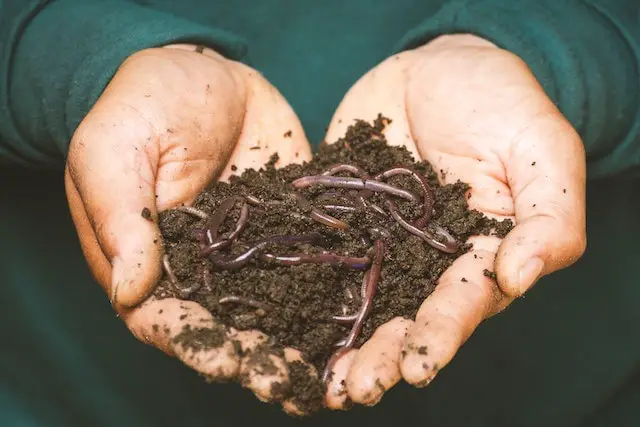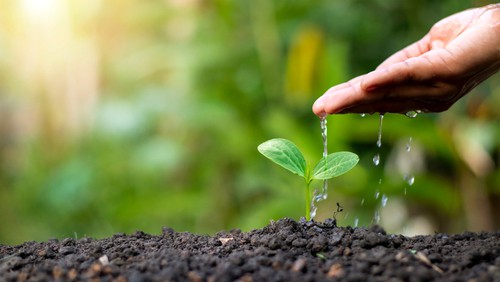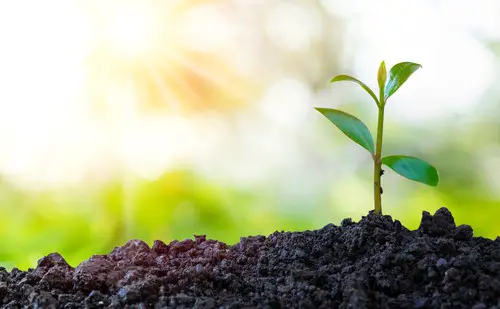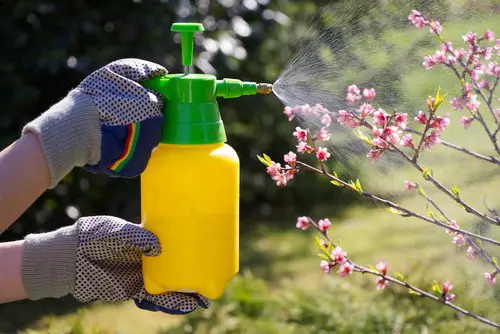Mandevilla is a beautiful vine plant that is commonly grown for its stunning flowers. However, it can be quite frustrating to see mandevilla leaves turning yellow with brown spots. This is a common problem that affects many gardeners and can be caused by a variety of factors.
Understanding Mandevilla and its needs is crucial to prevent yellowing leaves with brown spots. This plant requires well-draining soil, adequate sunlight, and proper watering.
Failure to meet these requirements can cause the plant to become stressed, which can lead to yellowing leaves with brown spots. In this article, we will explore the causes of this problem and provide treatment and prevention strategies to help you keep your Mandevilla healthy and thriving.
Key Takeaways
- Mandevilla requires well-draining soil, adequate sunlight, and proper watering to prevent yellowing leaves with brown spots.
- Watering and drainage issues, nutrient deficiencies, soil conditions, temperature and sunlight factors, and root health can cause yellowing leaves with brown spots.
- Treatment and prevention strategies include repotting, adjusting watering and fertilizing schedules, and addressing any underlying issues that may be causing stress to the plant.
Check out these other popular posts:
Understanding Mandevilla and Its Needs

Mandevilla is a popular flowering vine that is native to tropical and subtropical regions. It is highly valued for its beautiful flowers and is commonly used in landscape design. However, like any other plant, Mandevilla has specific needs that must be met to thrive.
Ideal Conditions for Growth
Mandevilla requires a warm and humid environment to grow. It thrives in full sun or partial shade and needs well-draining soil to prevent waterlogging. The ideal temperature range for Mandevilla is between 60°F to 80°F.
Mandevilla is a fast-growing plant, and it requires regular fertilization to support its growth. A balanced fertilizer with an NPK ratio of 10-10-10 is recommended every two to three weeks during the growing season.
Common Pests and Diseases
Mandevilla is susceptible to various pests and diseases that can cause leaves to turn yellow with brown spots. Some common pests that attack Mandevilla include spider mites, aphids, and whiteflies. These pests can be controlled by regular inspection and treatment with insecticidal soap or neem oil.
Mandevilla is also prone to fungal diseases such as powdery mildew and leaf spot. These diseases can be prevented by ensuring adequate air circulation around the plant and avoiding overhead watering. If the plant is infected, treatment with a fungicide may be necessary.
Mandevilla Leaves Turning Yellow with Brown Spots – 3 Common Problems

Mandevilla plants are known for their beautiful and vibrant flowers, but when the leaves start to turn yellow with brown spots, it can be a sign of a problem. There are several reasons why mandevilla leaves may yellow and develop brown spots, including:
1. Nutrient Deficiencies
Mandevilla plants require certain nutrients to grow and thrive. A lack of nutrients such as nitrogen, iron, and zinc can cause yellowing leaves with brown spots. Iron deficiencies are more common with mandevilla plants than other nutrients.
If this is the case, the younger leaves near the base of a mandevilla vine will yellow first. The soil pH for mandevilla ought to be under 7. Any higher than a 7.0 and the plant will struggle to absorb iron from the soil.
2. Watering Issues
Overwatering or underwatering can cause mandevilla leaves to yellow and develop brown spots. Waterlogged roots are a common reason for the mandevilla plant turning yellow, as is dried out soil.
If the plant is getting too little water, leaves will curl as they yellow. Bottom watering can be effective in this case, as the plant will only take up the water it needs.
3. Pests and Diseases
Pests such as spider mites, aphids, mealybugs, whiteflies, and scales can cause yellowing leaves with brown spots. These pests feed on the sap of the plant, which can cause damage to the leaves.
Red spider mites are a particular problem for mandevilla plants. They can cause yellowing leaves with brown spots and can be difficult to control.
Fungal diseases such as botrytis blight, gray mold, and anthracnose can also cause yellowing leaves with brown spots. These diseases thrive in moist environments and can be spread by water, wind, and insects. Fungal diseases can be difficult to control and may require treatment with fungicides.
Watering and Drainage Issues

Mandevilla plants require moderate watering, and overwatering can lead to yellowing leaves with brown spots. It is essential to ensure that the soil is moist but not waterlogged. On the other hand, underwatering can also cause the leaves to turn yellow and drop.
One of the main reasons for yellowing leaves with brown spots is poor drainage. If the plant is sitting in waterlogged soil, it can cause root rot, which can lead to the plant’s death. Therefore, it is crucial to ensure that the pot has proper drainage holes to allow excess water to drain out.
To prevent overwatering or underwatering, it is recommended to follow a watering schedule. The frequency of watering depends on the soil moisture, temperature, and humidity.
During the growing season, it is best to water the plant thoroughly once a week. In contrast, during the dormant season, the plant requires less water, and it is best to water it only when the soil is dry to the touch.
It is also essential to check the soil moisture regularly. To do this, insert a finger into the soil up to the first knuckle. If the soil feels dry, it is time to water the plant. If the soil feels moist, wait a few days before watering.
Nutrient Deficiencies and Soil Conditions
Mandevilla plants are susceptible to nutrient deficiencies and soil conditions that can cause yellow leaves with brown spots.
One common nutrient deficiency in mandevilla plants is iron deficiency. This deficiency is more common in mandevilla plants than other nutrients. If the soil pH is too high, the plant will struggle to absorb iron from the soil, causing the younger leaves near the base of the vine to yellow first.
The ideal soil pH for mandevilla plants is under 7.0. If the soil pH is higher than 7.0, adding iron chelate to the soil can help correct the deficiency.
Nitrogen deficiency is another common nutrient deficiency in mandevilla plants. This deficiency can cause yellowing of the leaves, especially in older leaves. Adding a nitrogen-rich fertilizer or liquid fertilizer can help correct the deficiency.
Manganese and zinc deficiencies can also cause yellow leaves with brown spots in mandevilla plants. Adding a fertilizer that contains these nutrients can help correct the deficiency.
In addition to nutrient deficiencies, soil conditions can also cause yellow leaves with brown spots in mandevilla plants. Soil that is too acidic or alkaline can cause nutrient imbalances and prevent the plant from absorbing nutrients properly.
Testing the soil pH and adding organic matter, peat moss, or sand to adjust the pH can help correct the issue.
Well-draining soil is also important for mandevilla plants. Soil that is too wet or compacted can cause root rot and prevent the plant from absorbing nutrients properly. Adding perlite or sand to the potting soil can help improve drainage.
Temperature and Sunlight Factors

Yellowing leaves with brown spots on mandevilla plants can also be caused by temperature and sunlight factors. Mandevilla plants prefer warm temperatures between 60 to 80°F.
If the temperature drops below 50°F, the plant will become stressed and may start to drop leaves. On the other hand, if the temperature is too high, the leaves may become scorched and turn yellow.
Direct sunlight is also essential for mandevilla plants. They need at least six hours of direct sunlight every day to thrive. However, too much sun exposure can also cause yellowing leaves with brown spots.
During the summer months, the plant may need some shade during the hottest part of the day to prevent sun damage. In the fall, the plant may need to be moved to a sunnier location as the days get shorter.
It is important to note that different varieties of mandevilla plants may have different temperature and sunlight requirements. It is always best to research the specific variety of mandevilla plant you have to ensure that you are providing the optimal growing conditions.
Here are a few tips to help ensure that your mandevilla plant is getting the right temperature and sunlight factors:
- Keep the plant in a warm location that is protected from cold drafts and temperature fluctuations.
- Provide the plant with at least six hours of direct sunlight every day, but be mindful of excessive sun exposure during the hottest part of the day.
- Consider moving the plant to a sunnier location in the fall as the days get shorter.
- Monitor the temperature and adjust the plant’s location as needed to ensure that it is not too hot or too cold.
Repotting and Root Health
When it comes to mandevilla plants, repotting can be a crucial step in maintaining healthy root systems. Plants that have outgrown their pots can experience crowded roots, which can lead to root rot and other issues.
One of the main causes of yellowing leaves with brown spots is poor root health, so it’s important to give your plant the space it needs to thrive.
To determine if it’s time to repot your mandevilla, look for signs of root crowding or rotting. If the roots are tightly packed and circling around the bottom of the pot, it’s time to give your plant a new home. Similarly, if you notice a foul smell or mushy roots when you remove your plant from its pot, it may be suffering from root rot.
When repotting, choose a pot that is one size larger than the current one to give the roots room to grow. Be sure to select a pot with drainage holes to prevent water from accumulating and causing root rot. Additionally, consider using a potting mix that is well-draining and provides adequate aeration for the roots.
During the repotting process, take care not to damage the roots. Gently loosen any tangled roots and remove any dead or rotting material. Be sure to plant the mandevilla at the same depth it was in its previous pot.
In addition to repotting, it’s important to maintain good root health by providing adequate aeration and oxygen to the roots. This can be achieved through proper watering practices and by avoiding overwatering. Be sure to allow the soil to dry out slightly between waterings to prevent waterlogged roots.
Treatment and Prevention Strategies

When it comes to treating and preventing Mandevilla leaves from turning yellow with brown spots, there are several strategies that can be employed.
Firstly, it is important to identify the underlying cause of the problem. If the root cause is a fungal disease, then using a fungicide can be effective. Propiconazole, myclobutanil, and triadimefon are broad-spectrum fungicides that can be used to treat leaf spots caused by fungi and bacteria.
It is important to follow the instructions on the label and apply the fungicide as soon as symptoms appear.
Another effective treatment for Mandevilla leaves is neem oil. Neem oil is a natural insecticide and fungicide that can be used to treat a range of plant diseases. It is safe to use and can be applied directly to the leaves. Neem oil works by disrupting the life cycle of insects and fungi, preventing them from reproducing and spreading.
In addition to using fungicides and neem oil, it is important to ensure that the Mandevilla plant is healthy and well-maintained. This includes providing the plant with adequate water, sunlight, and nutrients. Fast-growing plants like Mandevilla require regular fertilization to support new growth.
Proper air circulation is also important for preventing fungal diseases. Mandevilla plants should be planted in an area with good air flow to prevent the buildup of moisture, which can promote fungal growth.
Lastly, it is important to prune the Mandevilla plant regularly to remove any dead or diseased leaves. This can help prevent the spread of disease and promote healthy new growth.
By following these treatment and prevention strategies, Mandevilla owners can keep their plants healthy and free from yellowing leaves with brown spots.
Frequently Asked Questions

Why are my mandevilla leaves turning yellow with brown spots?
Yellowing leaves with brown spots on mandevilla plants can be caused by a variety of factors. One possible cause is a fungal infection, which can occur when the plant is overwatered or if the leaves remain wet for too long.
Another possible cause is a nutrient deficiency, such as a lack of iron or nitrogen in the soil. Pests, such as spider mites or whiteflies, can also cause yellowing leaves with brown spots.
How do you treat brown spots on mandevilla leaves?
Treating brown spots on mandevilla leaves depends on the underlying cause. If the spots are caused by a fungal infection, the affected leaves should be removed and the plant should be treated with a fungicide.
If the spots are caused by a nutrient deficiency, the soil should be tested and the appropriate nutrients added. If pests are causing the spots, the plant should be treated with an insecticide.
What causes mandevilla leaves to turn brown and fall off?
Mandevilla leaves can turn brown and fall off for a variety of reasons, including overwatering, underwatering, pests, disease, and environmental stress.
Overwatering can cause root rot, which can lead to brown leaves and leaf drop. Underwatering can cause the leaves to dry out and fall off. Pests and disease can also cause leaf drop, as can extreme temperatures or exposure to direct sunlight.
How can you prevent mandevilla leaf drop?
Preventing mandevilla leaf drop involves proper care and maintenance of the plant. This includes providing the plant with the appropriate amount of water and sunlight, avoiding over-fertilization, and treating any pests or disease promptly.
It is also important to ensure that the plant is planted in well-draining soil and that it is not exposed to extreme temperatures or direct sunlight.
Why do dipladenia leaves turn yellow and fall off?
Dipladenia leaves can turn yellow and fall off for many of the same reasons as mandevilla leaves, including overwatering, underwatering, pests, disease, and environmental stress.
Overwatering can cause root rot, which can lead to yellow leaves and leaf drop. Underwatering can cause the leaves to dry out and fall off. Pests and disease can also cause leaf drop, as can extreme temperatures or exposure to direct sunlight.
How do you revive an overwatered mandevilla plant?
To revive an overwatered mandevilla plant, the first step is to stop watering it immediately. Allow the soil to dry out completely before watering again.
If the plant is in a pot, make sure that the pot has adequate drainage and that the soil is well-draining. If the roots are rotted, they should be trimmed back and the plant should be repotted in fresh soil. Feeding the plant with a balanced fertilizer can also help revive it.

Hey, I’m Lisa and I’ve been an avid gardener for over 30 years. I love writing, talking and living in the garden! Feel free to connect with me on my socials below


